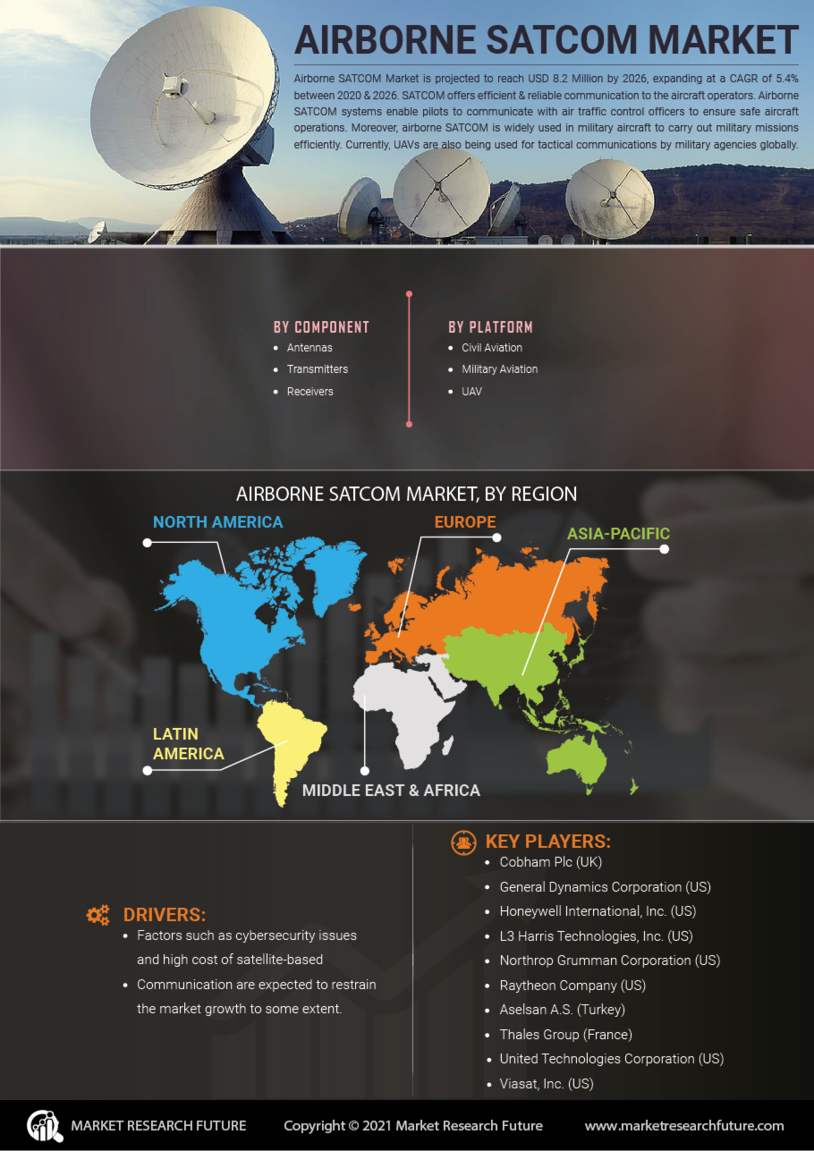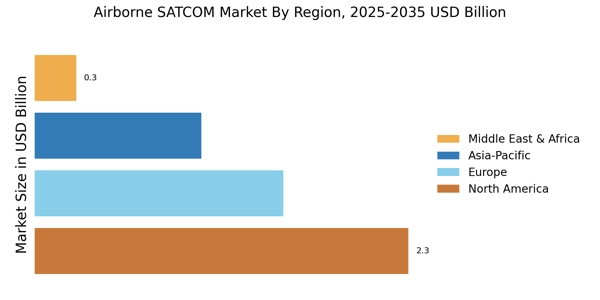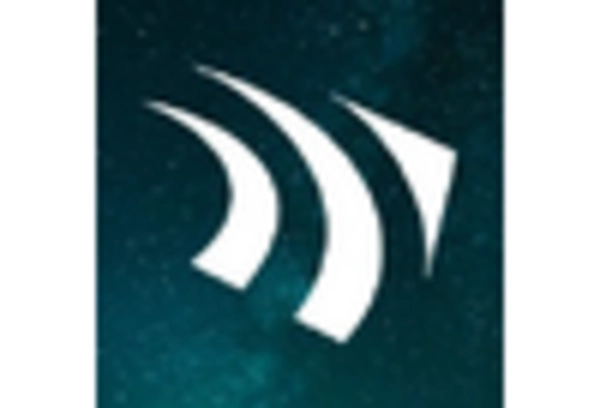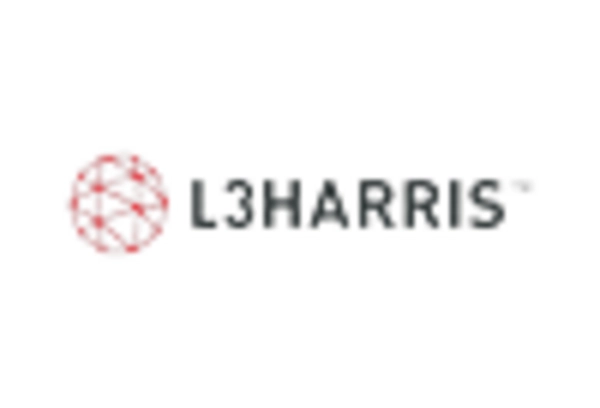Growing Military Expenditure
The Airborne SATCOM Market is significantly influenced by the growing military expenditure across various nations. As geopolitical tensions rise, governments are increasingly investing in advanced communication technologies to enhance their defense capabilities. This trend is particularly pronounced in regions with ongoing conflicts or strategic interests. Recent reports indicate that military budgets for communication systems are expected to increase by approximately 10% annually, with a substantial portion allocated to airborne SATCOM solutions. This surge in military spending is driving demand for sophisticated SATCOM systems that offer enhanced data transmission capabilities and secure communication channels. Consequently, defense contractors are actively developing innovative airborne SATCOM technologies to meet the evolving requirements of military clients.
Expansion of Commercial Aviation
The Airborne SATCOM Market is benefiting from the expansion of commercial aviation, which is driving demand for enhanced communication systems. As airlines seek to improve passenger experience and operational efficiency, the integration of SATCOM technology has become increasingly vital. Recent statistics suggest that the commercial aviation sector is projected to grow at a CAGR of 5% over the next decade, leading to a corresponding increase in the need for airborne SATCOM solutions. Airlines are investing in high-speed internet and in-flight entertainment systems, which rely heavily on satellite communications. This trend is prompting manufacturers to innovate and provide advanced SATCOM systems that cater to the specific needs of commercial aviation, thereby expanding their market presence.
Focus on Security and Resilience
In the Airborne SATCOM Market, there is an increasing emphasis on security and resilience in communication systems. As threats to cybersecurity continue to evolve, stakeholders are prioritizing the development of secure SATCOM solutions that can withstand potential attacks. This focus on security is particularly relevant for military applications, where the integrity of communication channels is critical. Recent data indicates that investments in secure SATCOM technologies are expected to rise, with a projected increase of 15% in defense budgets allocated to communication systems over the next few years. Additionally, the resilience of airborne SATCOM systems is being enhanced through redundancy and failover mechanisms, ensuring continuous operation even in adverse conditions. This dual focus on security and resilience is likely to shape the future of the airborne SATCOM market.
Increased Demand for Connectivity
The Airborne SATCOM Market is witnessing a surge in demand for connectivity solutions across various sectors. The rise of remote operations in industries such as aviation, maritime, and defense has created a pressing need for reliable communication systems. As organizations seek to enhance operational efficiency, the demand for airborne SATCOM systems is expected to grow significantly. Recent estimates suggest that the market could reach a valuation of over $5 billion by 2026, driven by the increasing reliance on satellite communications for real-time data transmission. This trend is particularly evident in military applications, where secure and uninterrupted communication is paramount. Consequently, manufacturers are focusing on developing advanced SATCOM solutions that cater to the evolving needs of their clients.
Technological Advancements in Airborne SATCOM
The Airborne SATCOM Market is experiencing rapid technological advancements that enhance communication capabilities. Innovations such as high-throughput satellites (HTS) and phased array antennas are revolutionizing the sector. HTS technology allows for increased bandwidth and improved data rates, which are crucial for military and commercial applications. The integration of artificial intelligence and machine learning into SATCOM systems is also on the rise, enabling smarter resource allocation and network management. According to recent data, the market for airborne SATCOM systems is projected to grow at a compound annual growth rate (CAGR) of approximately 8% over the next five years, driven by these technological innovations. As a result, stakeholders are increasingly investing in research and development to stay competitive in this evolving landscape.


















Leave a Comment